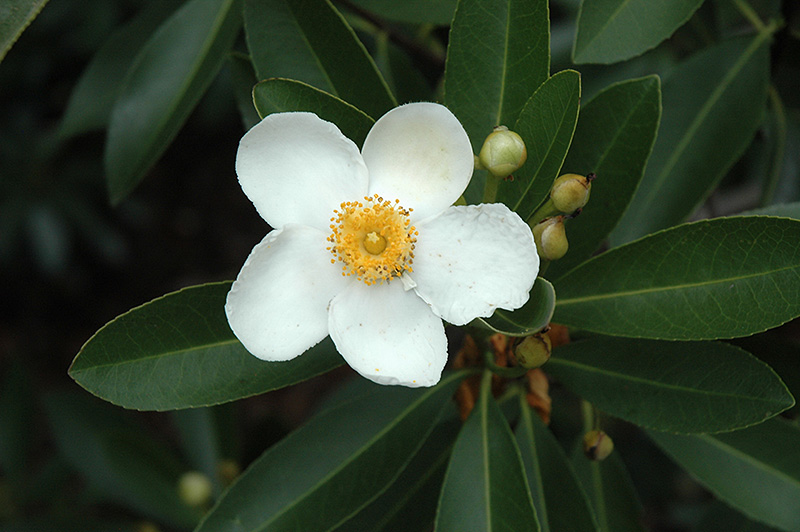|
|
|
| home | about us | loyalty program | products | directions | warranty | garden splendor ® | plant collector | landscaping | |
| Plant Finder | |
|
Sweet Tea Mountain Gordlinia Gordlinia x grandiflora 'Sweet Tea' Height: 25 feet Spread: 15 feet
Sunlight:
Hardiness Zone: 7a Brand: Southern Living Description: A rare shrub or small tree featuring large white flowers in summer and dark green, semi-evergreen foliage; will produce some shades of red and orange in fall; must have well-drained, rich, acidic soil and adequate moisture Ornamental Features Sweet Tea Mountain Gordlinia features bold fragrant white cup-shaped flowers with yellow eyes and gold anthers held atop the branches from early to late summer. It has dark green foliage with light green undersides. The serrated narrow leaves turn outstanding shades of scarlet and orange in the fall. The smooth gray bark adds an interesting dimension to the landscape. Landscape Attributes Sweet Tea Mountain Gordlinia is a multi-stemmed deciduous tree with an upright spreading habit of growth. Its average texture blends into the landscape, but can be balanced by one or two finer or coarser trees or shrubs for an effective composition. This tree will require occasional maintenance and upkeep, and is best pruned in late winter once the threat of extreme cold has passed. It is a good choice for attracting butterflies to your yard. Gardeners should be aware of the following characteristic(s) that may warrant special consideration;
Sweet Tea Mountain Gordlinia is recommended for the following landscape applications;
Planting & Growing Sweet Tea Mountain Gordlinia will grow to be about 25 feet tall at maturity, with a spread of 15 feet. It has a low canopy with a typical clearance of 3 feet from the ground, and is suitable for planting under power lines. It grows at a fast rate, and under ideal conditions can be expected to live for 40 years or more. This tree does best in full sun to partial shade. It requires an evenly moist well-drained soil for optimal growth, but will die in standing water. It is very fussy about its soil conditions and must have rich, acidic soils to ensure success, and is subject to chlorosis (yellowing) of the foliage in alkaline soils. It is quite intolerant of urban pollution, therefore inner city or urban streetside plantings are best avoided, and will benefit from being planted in a relatively sheltered location. Consider applying a thick mulch around the root zone in winter to protect it in exposed locations or colder microclimates. This particular variety is an interspecific hybrid. Characteristics
Applications
Features & Attributes
|
|
